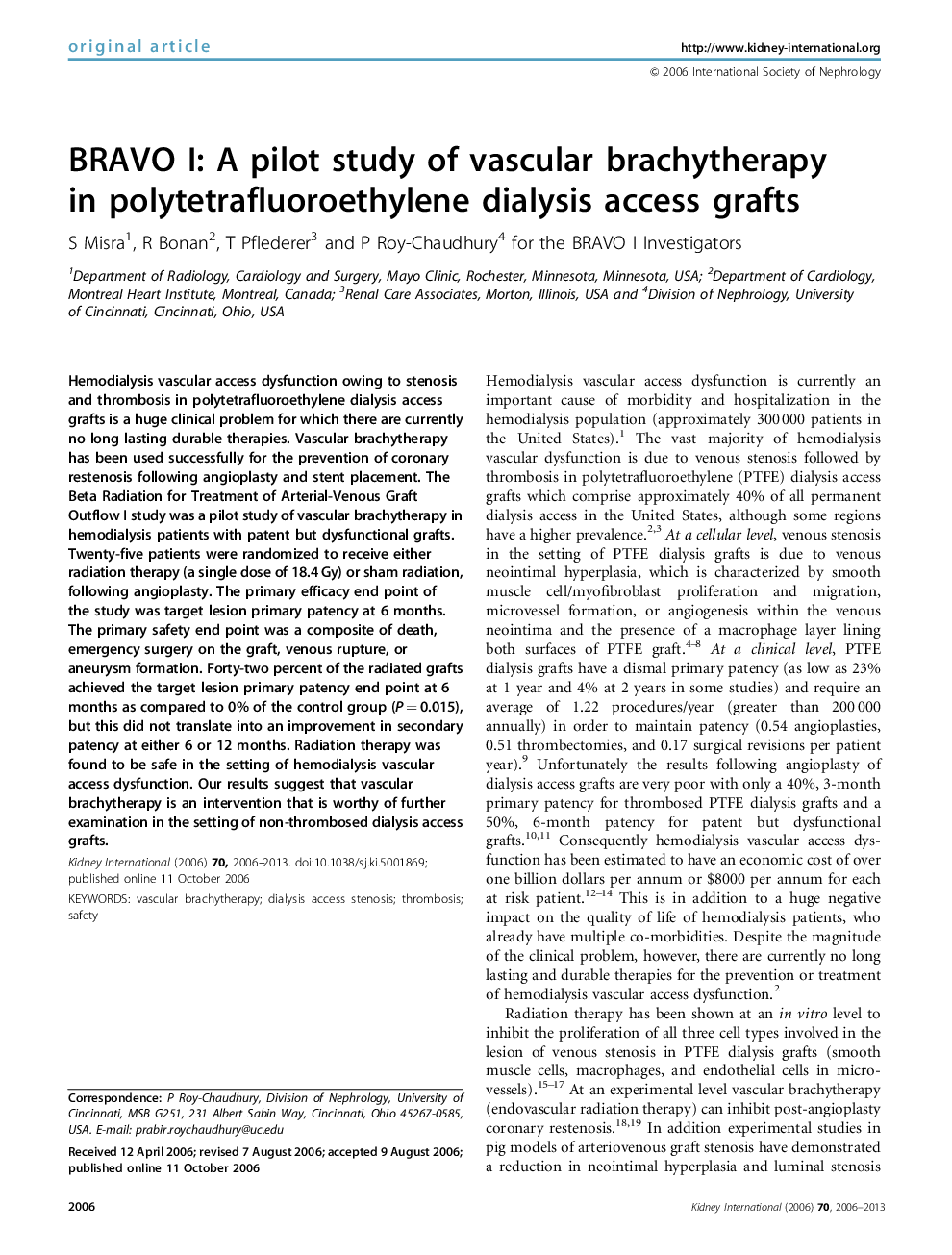| Article ID | Journal | Published Year | Pages | File Type |
|---|---|---|---|---|
| 3889381 | Kidney International | 2013 | 8 Pages |
Abstract
Hemodialysis vascular access dysfunction owing to stenosis and thrombosis in polytetrafluoroethylene dialysis access grafts is a huge clinical problem for which there are currently no long lasting durable therapies. Vascular brachytherapy has been used successfully for the prevention of coronary restenosis following angioplasty and stent placement. The Beta Radiation for Treatment of Arterial-Venous Graft Outflow I study was a pilot study of vascular brachytherapy in hemodialysis patients with patent but dysfunctional grafts. Twenty-five patients were randomized to receive either radiation therapy (a single dose of 18.4Â Gy) or sham radiation, following angioplasty. The primary efficacy end point of the study was target lesion primary patency at 6 months. The primary safety end point was a composite of death, emergency surgery on the graft, venous rupture, or aneurysm formation. Forty-two percent of the radiated grafts achieved the target lesion primary patency end point at 6 months as compared to 0% of the control group (P=0.015), but this did not translate into an improvement in secondary patency at either 6 or 12 months. Radiation therapy was found to be safe in the setting of hemodialysis vascular access dysfunction. Our results suggest that vascular brachytherapy is an intervention that is worthy of further examination in the setting of non-thrombosed dialysis access grafts.
Related Topics
Health Sciences
Medicine and Dentistry
Nephrology
Authors
S. Misra, R. Bonan, T. Pflederer, P. Roy-Chaudhury, for the BRAVO I Investigators for the BRAVO I Investigators,
